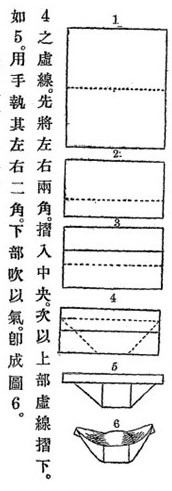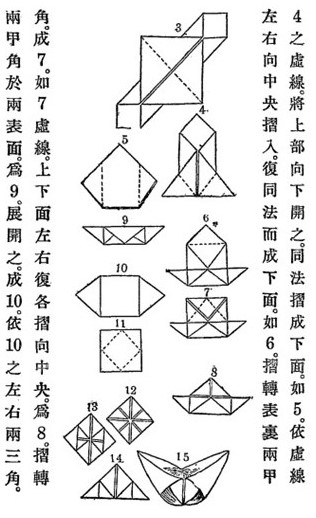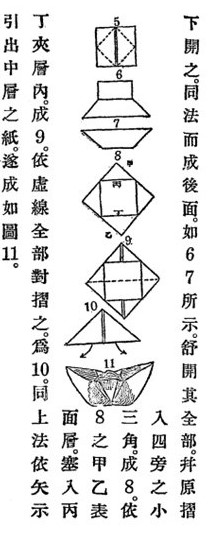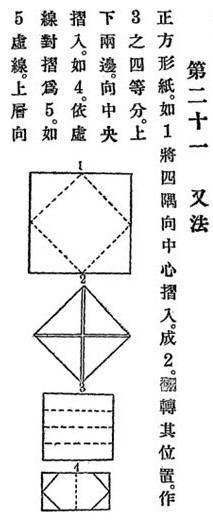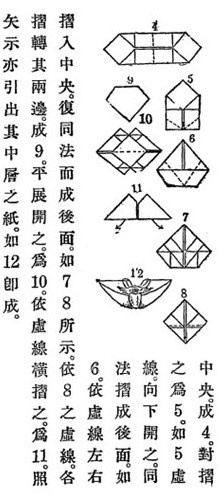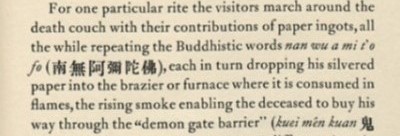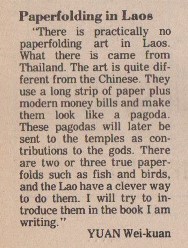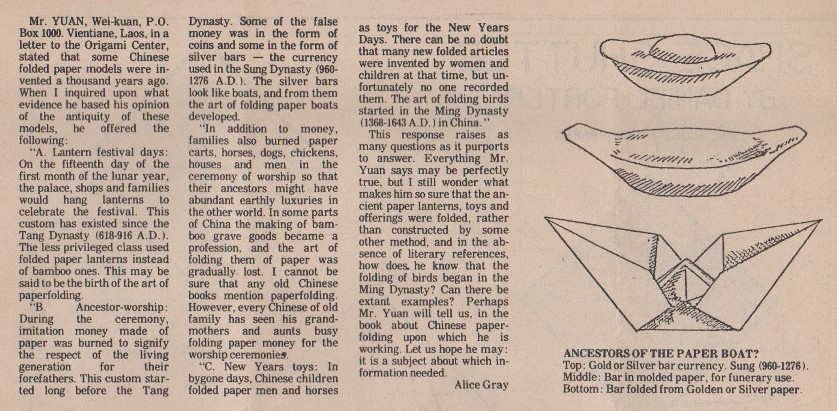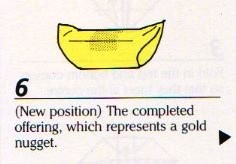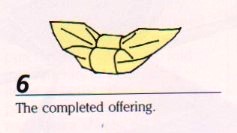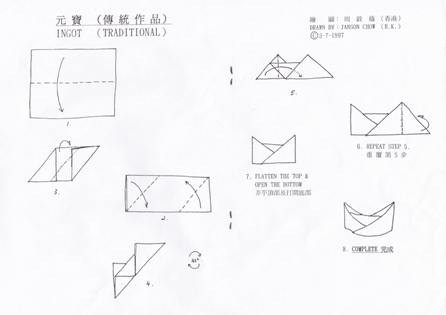| The Public Paperfolding History Project
x |
|||||||
| Folded Paper Yuan Bao / Sycee | |||||||
This page attempts to record what is known about the folding of paper representations of gold ingots, otherwise known as Yuan Bao or Sycee, to be burned as part of the ceremony of traditional Chinese funerals. Please contact me if you know any of this information is incorrect or if you have any other information that should be added. Thank you. ********** 1917 The earliest reference to Yuan Bao / Sycee folded from paper that I am aware of appears in 'Xu Zhe zhi tu shuo' (More Illustrated Paperfolding) by Yongxiang Shi, which was published by the Commercial Press in Shanghai in 1917, and which includes five different designs. 1. Developed from the Trousers
********** 2. Developed from a version of the Newspaper Hat The final instruction says 'Hold the lower parts of the left and right cornerswithyour hands and inflate to form the figure.'
********** 3.
********** 4. Another method
********** 5. Another method
********** 1937 Dard Hunter's monograph 'Ceremonial Chinese Paper', which was published in 1937, contains mention of the folding and burning of paper sycee.
********** The 2nd Edition of Dard Hunter's 'Papermaking: The History and Technique of an Ancient Craft' which was published in 1937 (the 1st Edition was published in 1935 but I have not seen a copy of this) included a chapter on 'Paper: a Sacred Material' which described the making of objects constructed of cardboard, bamboo and paper, which were intended to be burned at funerals, but made no specific reference to folded paper yuan bao / sycee. ********** 1979 The first reference to Yuan Bao that I am aware of in Western literature specifically related to paperfolding appears in the Origamian Vol 14 Issue 1-2, published in a letter to the Editor from Yuan Wei-kuan in 1979. The article is headed 'Paperfolding in Laos' but is in fact largely about paperfolding in China. The article includes an illustration of a 'Bar folded from Golden or Silver paper' although it does not say where this illustration was sourced from. It may have accompanied the letter. It is noteworthy that the middle illustration is captioned 'Bar in moulded paper, for funerary use' which suggests that not all paper Yuan Bao / Sycee were made by folding.
********** 1987 Foded paper Yuan Bao / Sycee (though just called 'ingots') are also mentioned in 'Complete Origami' by Eric Kenneway, first published in 1987, in a section titled 'Chinese Tradition', where he says that these 'ingots' are traditionally folded from Joss papers (which have a gold square in the centre). The information he provides comes from the late Francis Ow and includes two sets of diagrams for different forms of ingot, which he calls a 'traditional funerary offering' and a 'traditional Chinese celebratory offering'. The latter is opened up to its finished shape in a manner highly reminiscent of the final move used to create the Chinese Junk, and on this basis Kenneway states that the Chinese Junk's 'similarity to a Chinese ceremonial fold paces it firmly in the Chinese tradition.'
********** 1997 In 1997 the Hong Kong Origami Society published diagrams drawn by Janson Chow which presented the traditional Western European design known as the Pipecap, or Bishop's Mitre, as a traditional Chinese paperfold representing an Ingot.
********** |
|||||||

